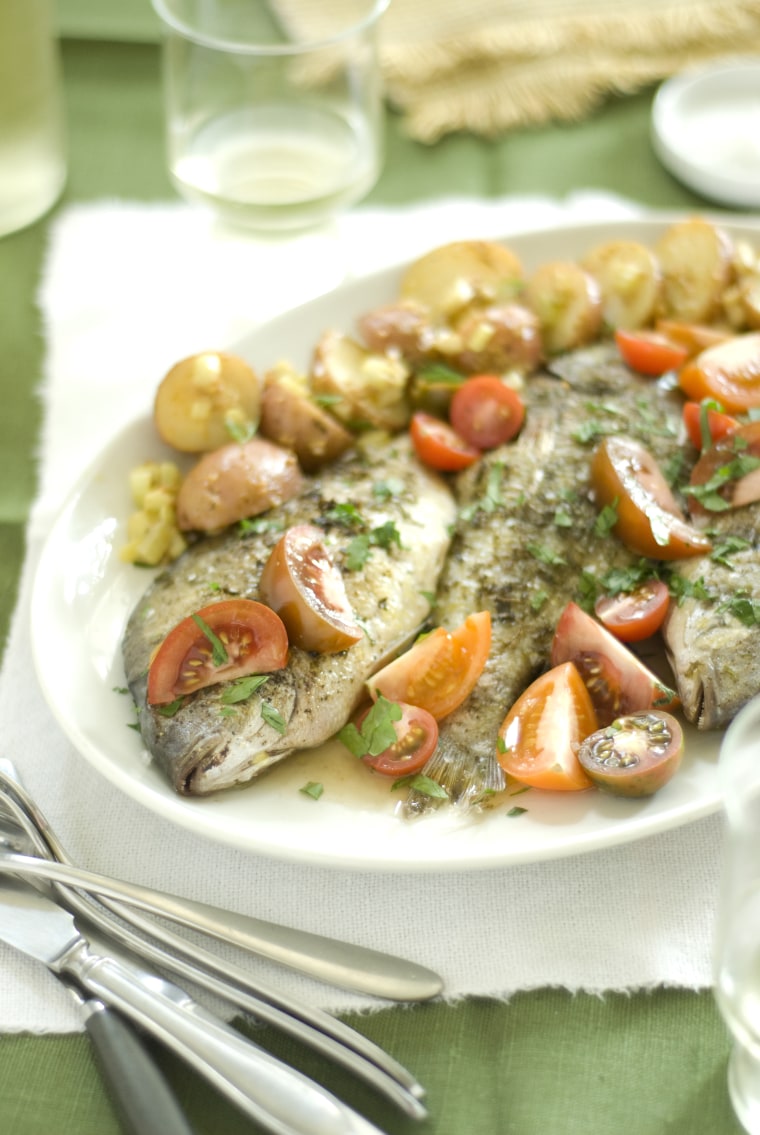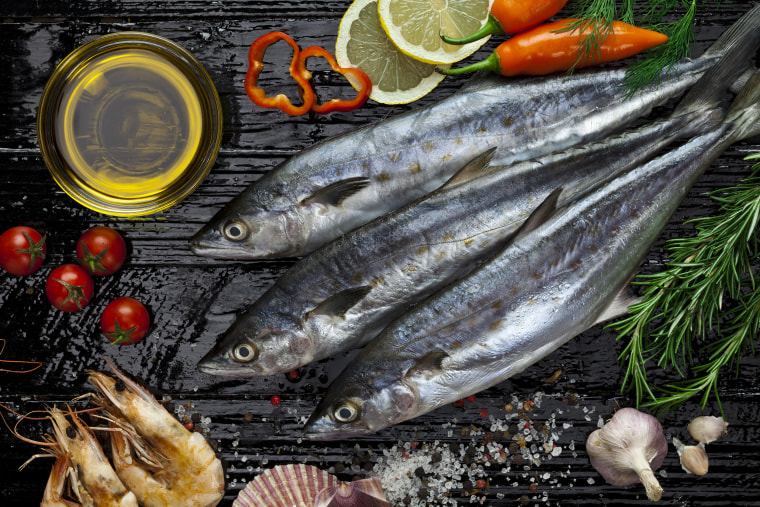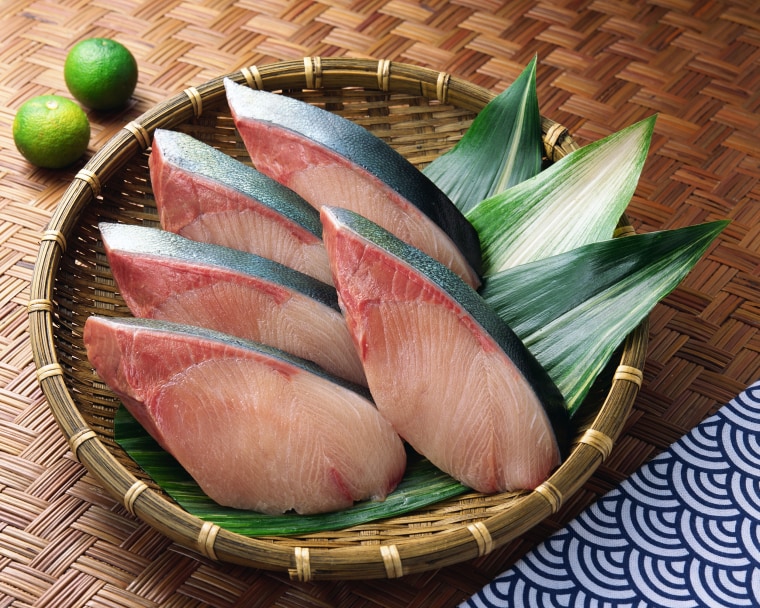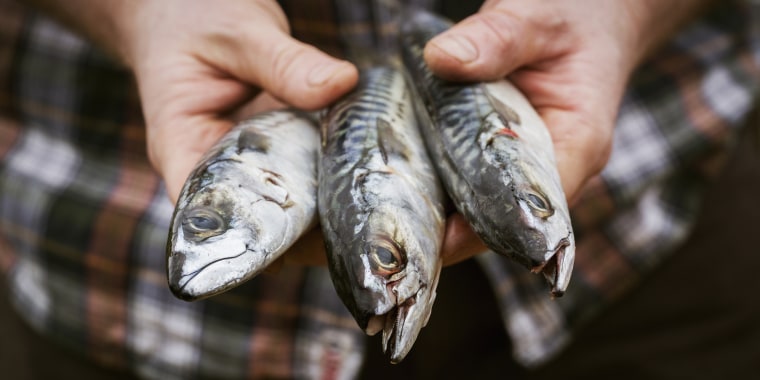Salmon, shrimp and tuna might be on pretty much every restaurant's menu, but they certainly aren’t the only fish in the sea.
With consumers looking to eat more sustainably — and affordably — folks are finding more bang for their buck by opting for so-called "trash fish." No, these fish don't eat trash. Nor do they dwell at the bottom of the food chain. The term "trash fish" is usually applied to any fish that is underused and under consumed (i.e., a fish with a population that isn't threatened by overfishing).
“Trash fish are cheap, local and delicious,” Mike Lata, the chef and owner of FIG and The Ordinary in Charleston, South Carolina, told TODAY Food. “Trash fish used to be fish that had no commercial value. That, by definition, now has changed completely.” According to Lata, who will be participating in Charleston Wine + Food in March, both chefs and consumers now understand the importance of eating creatively, which in turn, will help keep the ocean full of diverse fish species.
For decades, commercial fisherman have been targeting more widely known varieties of fish like tuna, salmon, shrimp and cod. Prized for their relatively mellow tastes and versatility, these fish have been popular for years.
In the past, less desirable fish, such as porgy, sheepshead, rudderfish and mackerel, were simply thrown back into the sea when they got caught up in the net — or just thrown away.
“At first, people just demanded the well-known fish, like grouper and snapper, even when they were out of season,” Lata explained. “Restaurant owners imported the out-of-season fish to appease customers, but the quality would go down.”
Lata said he first noticed a shift in the early 2000s. In Charleston, which is known for its seafood, chefs started serving “alternative species” to be more sustainable and keep menus local — and people loved it.

Today, trash fish have their own market, since many recipes used with better-known species can be adapted to cook trash fish. And many chefs agree that the more popular fish don’t necessarily taste better; they’re just more familiar to consumers.
“They are not more delicious, just a safer sell,” Kevin Johnson, owner and chef at Charleston eatery The Grocery, said. “We want to turn people on to some new varieties so they are comfortable the next time they see it on a menu or at their local seafood counter.”
The popularity of certain fish has also shifted over the years, based on what's in culinary fashion. Up until the 19th century, for example, lobster was plentiful and basically considered a trash fish until people who didn't live in coastal cities first got a taste (and weren't aware of the stigma the crustacean carries) and chefs’ new cooking techniques improved the shellfish's flavor.

Today, the rising popularity of trash fish also has a lot to do with price. Trash fish typically cost 25 to 40 percent less than salmon or tuna in any given market.
“I think the main myth to debunk is that just because they're less expensive doesn't mean their value is less. It is the law of supply and demand of the ocean,” Johnson said. “The species that are in highest demand are the ones that everyone from the fishermen to the purveyor to the chef knows people will gravitate toward purchasing.” Since salmon, tuna, shrimp and cod are available in almost every major market, they have developed loyal devotees. By comparison, trash fish availability is still largely determined by region since they aren't likely to be imported.
However, many restaurant chefs say they’re not purchasing trash fish to save money. Sure, it's a nice benefit, but more importantly, using different species helps support fisheries for the foreseeable future.
Basically, eating trash fish gives more popular fish, like grouper and snapper, a break. In order to sustain the oceans, many chefs agree it’s crucial to diversify the catch, which can be helped by promoting alternative species.
“The public has to discover other fish they like and be comfortable buying it at a restaurant or seafood market in order for us to protect our resources,” Johnson said.

Preparing a dish using trash fish can be as simple as swapping it into the same recipe that works for a similar counterpart. Trash fish with a firm and muscular consistency, like rudderfish and amberjack, are great for steak-like preparations, commonly seen with swordfish or tuna.
“Any white, sweet, flaky trash fish can be substituted for any other white, sweet, flaky species,” Lata added. “For example, you can use porgy or triggerfish in the place of snapper or grouper.”
Sheepshead, considered to be a sweet and delicate trash fish, can be challenging to clean, according to Johnson. But that’s the only challenge. “You can then fry it or sauté it, like a flounder, which are great options.”
When they're really fresh, mackerel and rudderfish can even be served raw or prepared as a ceviche. Lata said that at his restaurants, they’ll cook Spanish mackerel in a wood oven and serve it with a salsa verde. “This is my absolute favorite cooked fish preparation.”
Of course, for true seafood lovers, the new catch of the day is usually the best one.
Said Lata, “If the fish is very fresh, all of the hard work is done.”

